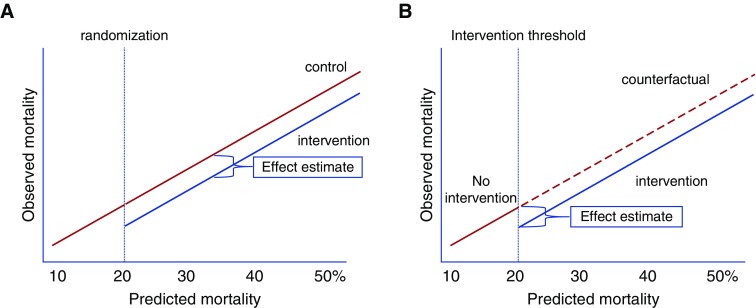Figure 1.
Conceptual frameworks of randomized controlled trials (RCTs) and regression discontinuity designs (RDDs). (A) RCTs allocate interventions on the basis of random assignment. In this example, patients with a predicted readmission risk of more than 20% are randomized to receive an intervention or no intervention. When effective, the intervention shifts the association between predicted and observed mortality rates relative to the counterfactual, unexposed control group. (B) RDD in implementation and improvement science exploits the use of a threshold rule on a continuous assignment variable (in this example, a readmission risk score greater than X) to assign the intervention to patients. The association between the assignment variable (in this example, predicted readmission risk), and the outcome of interest (observed readmission rate) is then evaluated for a discontinuity at the threshold where the intervention was provided. Unlike RCTs, the counterfactual control group is not directly observed, because the intervention is offered to all eligible patients. However, estimates of counterfactual outcomes with and without the intervention are observed immediately above and below the threshold cutoff value, enabling causal inference at the threshold. With additional assumptions, causal effects can be projected to regions beyond the threshold.

